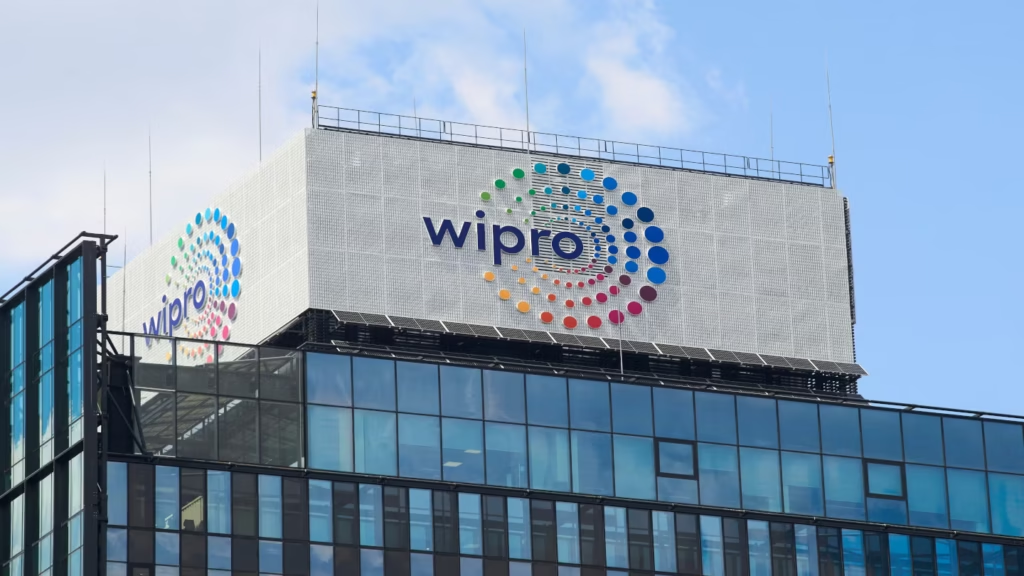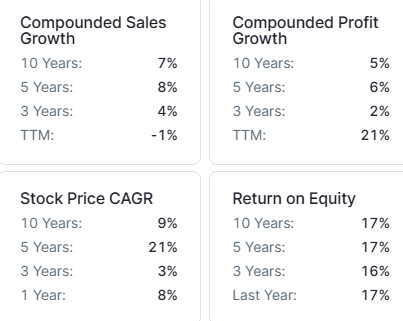Wipro Limited is one of the top multibagger stocks of the Indian stock market. It was listed on the BSE on November 08, 1995. Since listing, its stock has given a massive return of around 50,000%. Will Wipro continue to provide such great returns in the future as well? Let’s explore Wipro’s growth potential and the Wipro share price target 2025 to 2050 in this article.
About Wipro

Wipro is an Indian MNC that offers IT services, consulting, and business solutions. Mohamed Premji founded it in 1945 as a vegetable oil company in Amalner, Maharashtra. Wipro gradually expanded into the IT sector, eventually becoming one of the world’s leading technology companies. Wipro is headquartered in Bangalore, India, and now provides software development, cloud computing, cybersecurity, and artificial intelligence services to businesses. It operates in numerous countries and serves clients from a variety of industries, including banking, healthcare, and retail.
Wipro Business Model
- IT Services Business: Wipro provides IT consulting and software services to clients across various industries, including banking, healthcare, energy, retail, and manufacturing. It earns revenue by offering services such as application development, system integration, cloud migration, cybersecurity, and IT infrastructure management. These services are offered on long-term contracts, ensuring recurring income.
- Business Process Outsourcing (BPO): Wipro operates BPO services under its Wipro Digital Operations and Platforms (DOP) unit. It manages client operations like customer support, finance and accounting, and human resource services.
- Engineering and R&D Services: Wipro offers engineering services including product design, Industry 4.0, 5G solutions, and automotive software. It caters to global clients in automotive, aerospace, telecom, and semiconductors, positioning Wipro as a technology partner in digital transformation.
- Digital & Cloud Solutions: Wipro has invested heavily in cloud, AI, and analytics. Its partnerships with major cloud platforms (like AWS, Microsoft Azure, and Google Cloud) allow it to deliver cloud-native applications, digital customer experiences, and intelligent automation solutions.
- Consulting Business: Wipro also generates revenue through strategic business consulting under Capco (acquired in 2021). It serves global banking and financial services clients by advising on digital transformation, compliance, and technology implementation.
Wipro Fundamental Analysis
| Stock Name | Wipro Ltd. |
|---|---|
| NSE Symbol | WIPRO |
| Market Cap | ₹ 2,62,700 Cr. |
| 52W High | ₹ 325 |
| 52W Low | ₹ 208 |
| Stock P/E | 20.0 |
| Book Value | ₹ 78.6 |
| Dividend Yield | 2.43 % |
| ROCE | 19.7 % |
| ROE | 16.7 % |
| Face Value | ₹ 2.00 |
| Industry PE | 30.0 |
| Price to book value | 3.19 |
| Debt to equity | 0.23 |
| PEG Ratio | 3.23 |
| Quick ratio | 2.71 |

| Shareholders | Mar 2023 | Mar 2024 | Mar 2025 |
|---|---|---|---|
| Promoters | 72.92% | 72.89% | 72.73% |
| FIIs | 6.38% | 6.96% | 8.35% |
| DIIs | 8.01% | 8.28% | 7.47% |
| Public | 12.51% | 11.76% | 11.31% |
| Others | 0.18% | 0.11% | 0.11% |
| No. of Shareholders | 26,91,329 | 23,97,648 | 24,31,180 |
Key Factors Driving Wipro’s Future Growth
- Digital Transformation Across Industries: Global enterprises are accelerating their digital transformation journeys by adopting technologies like cloud computing, AI, automation, and data analytics. Wipro, with its deep domain expertise and strong capabilities in next-gen tech can take advantage of this growing demand.
- Strong Demand for Cybersecurity and Cloud Services: With increasing cyber threats and rising cloud adoption, organizations are investing heavily in secure, scalable IT infrastructures. Wipro’s strategic investments in cloud platforms (through Wipro FullStride Cloud Services) and cybersecurity (via its Cyber Defense Centers) are expected to drive higher client spending and multi-year contracts.
- Expansion in High-Growth Geographies: Wipro is actively expanding in North America, Europe, and emerging markets like the Middle East and Southeast Asia. These regions contribute a significant share of global IT spending. Wipro’s regional delivery models and localization strategies are expected to improve client engagement and profitability.
- Focus on High-Margin and Innovation-Led Segments: Wipro is moving toward higher-margin services such as engineering R&D, product design, and platform-led solutions. With its acquisition of Capco and investments in AI, Wipro is tapping into financial services and digital engineering segments that offer long-term growth potential.
- Cost Optimization and Automation: The company is driving internal efficiencies by adopting AI-based automation tools and rationalizing its delivery and talent base. These steps aim to improve operating margins and sustain profitability even during periods of macroeconomic uncertainty.
- Strategic Acquisitions and Partnerships:
- Wipro continues to acquire niche players and form alliances with leading tech providers (like AWS, Google Cloud, and Microsoft Azure). These collaborations enhance its service offerings, enable faster go-to-market, and strengthen its competitive edge.
Pros of Wipro
- Low PE Ratio Compared to Peers: Wipro has a PE ratio of 20.0, which is lower than the industry average of 30.0, making it relatively undervalued and potentially a good investment opportunity.
- Low Debt Levels: With a low debt-to-equity ratio of 0.23, Wipro has a minimum dependency on debt, reducing financial risk and interest expenses.
- High Promoter Holding: Wipro has a strong promoter holding of 72.7%, indicating the promoters’ high confidence in the company’s future growth and stability.
- Increase in FIIs Holding: Foreign Institutional Investors (FIIs) have increased their holding to 7.81% in December 2024 from 8.35% in March 2025, which indicates growing confidence in the Wipro’s future potential by the FIIs.
Cons of Wipro
- Poor Profit Growth – Wipro profit has grown at a CAGR of just 2% over the last three years, showing weak earnings growth over time.
- Poor Sales Growth – Wipro has delivered a poor sales growth of 4% CAGR over the last three years.
- High Price to Book Value: Wipro is trading at a Price-to-Book Value (P/B) ratio of 3.19, which indicates that its stock is significantly overvalued compared to its book value. This high valuation may limit future upside potential and pose a risk of correction if market sentiment changes.
- Decrease in DIIs Holding: Domestic Institutional Investors (DIIs) have reduced their holding to 8.20% in December 2024 from 7.47% in March 2025, indicating a decline in DIIs confidence in the company’s future growth prospects.
Wipro Ltd Balance Sheet
| Particulars | March 2023 | March 2024 | March 2025 |
|---|---|---|---|
| Equity Capital | 1,098 | 1,045 | 2,094 |
| Reserves | 76,570 | 73,488 | 80,270 |
| Borrowings | 17,467 | 16,465 | 19,204 |
| Other Liabilities | 21,789 | 23,611 | 26,618 |
| Total Liabilities | 116,924 | 114,609 | 128,185 |
| Fixed Assets | 44,757 | 43,628 | 45,187 |
| CWIP | 617 | 723 | 196 |
| Investments | 33,073 | 33,384 | 43,926 |
| Other Assets | 38,477 | 36,873 | 38,876 |
| Total Assets | 116,924 | 114,609 | 128,185 |
By the end of 2025, the Wipro share price is expected to be around ₹350 in normal conditions. In a bear market, it might be ₹336, and in a bull market, it may go up to ₹415.
| Wipro Share Price Target 2025 | Rupees (₹) |
|---|---|
| 1st Target | 336 |
| 2nd Target | 350 |
| 3rd Target | 415 |
In 2026, the Wipro share price is expected to be around ₹450 in a normal situation. In a bear market, it might be ₹400, and in a bull market, it may cross ₹540.
| Wipro Share Price Target 2026 | Rupees (₹) |
|---|---|
| 1st Target | 400 |
| 2nd Target | 450 |
| 3rd Target | 540 |
According to our analysis, the Wipro share price is expected to be around ₹500 in 2027. In a bear market, it might be ₹480, and in a bull market, it may cross ₹700.
| Wipro Share Price Target 2027 | Rupees (₹) |
|---|---|
| 1st Target | 480 |
| 2nd Target | 500 |
| 3rd Target | 700 |
According to our analysis, the Wipro share price may trade near ₹600 by 2028; bearish conditions could pull it down to ₹580, while a strong bull run might lift it to ₹916.
| Wipro Share Price Target 2028 | Rupees (₹) |
|---|---|
| 1st Target | 580 |
| 2nd Target | 600 |
| 3rd Target | 916 |
In a normal situation, the Wipro share price is projected to be approximately ₹800 in 2029. In a bear market, the value may be as low as ₹650, while in a bull market, it may rise to ₹1190.
| Wipro Share Price Target 2029 | Rupees (₹) |
|---|---|
| 1st Target | 650 |
| 2nd Target | 800 |
| 3rd Target | 1190 |
In a normal situation, the Wipro share price is projected to be approximately ₹1000 in 2030. In a bear market, the value may be as low as ₹700, while in a bull market, it may rise to ₹1550.
| Wipro Share Price Target 2030 | Rupees (₹) |
|---|---|
| 1st Target | 700 |
| 2nd Target | 1000 |
| 3rd Target | 1550 |
By 2035, the Wipro share price is projected to be around ₹2000 under normal conditions. In adverse markets, the price could fall to ₹1400, while favorable conditions might push it up to ₹4650.
| Wipro Share Price Target 2035 | Rupees (₹) |
|---|---|
| 1st Target | 1400 |
| 2nd Target | 2000 |
| 3rd Target | 4650 |
Under normal conditions, the Wipro share price might hit ₹7000 by 2040. A bearish trend could lower it to ₹2800, whereas a bullish surge could raise it to ₹13,950.
| Wipro Share Price Target 2040 | Rupees (₹) |
|---|---|
| 1st Target | 2800 |
| 2nd Target | 7000 |
| 3rd Target | 13,950 |
In 2050, the Wipro share price is expected to be around ₹30,000 in a normal situation. In a bear market, it might be ₹11,200, and in a bull market, it may go up to ₹83,700.
| Wipro Share Price Target 2050 | Rupees (₹) |
|---|---|
| 1st Target | 11,200 |
| 2nd Target | 30,000 |
| 3rd Target | 83,700 |
| Years | Target Price |
|---|---|
| Wipro Share Price Target 2025 | ₹336 to ₹415 |
| Wipro Share Price Target 2026 | ₹400 to ₹540 |
| Wipro Share Price Target 2027 | ₹480 to ₹700 |
| Wipro Share Price Target 2028 | ₹580 to ₹916 |
| Wipro Share Price Target 2029 | ₹650 to ₹1190 |
| Wipro Share Price Target 2030 | ₹700 to ₹1550 |
| Wipro Share Price Target 2035 | ₹1400 to ₹4650 |
| Wipro Share Price Target 2040 | ₹2800 to ₹13,950 |
| Wipro Share Price Target 2050 | ₹11,200 to ₹83,700 |
Disclaimer
This article is for educational purposes only. It is not a stock recommendation and should not be treated as such. Please ask your financial advisor before making any investment decision.
Also Read: KPIT Technologies Share Price Target 2025 to 2050

